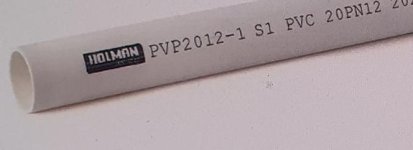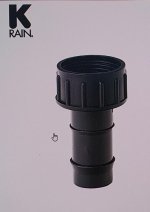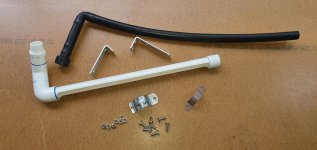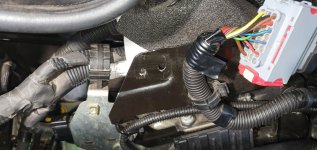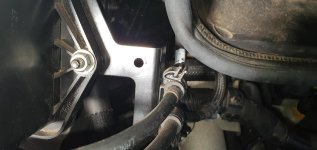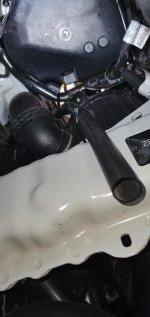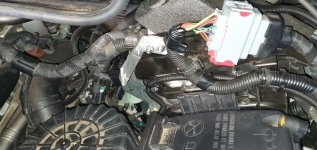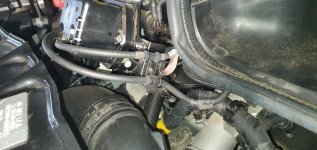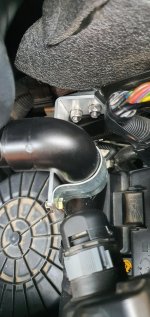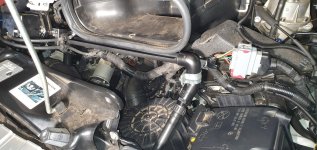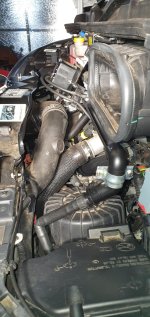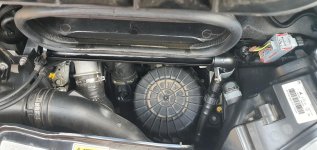Most Ducato owners will be aware of the design flaws of the windscreen scuttle plate allowing rainwater to penetrate through numerous points and cause havoc with electrical wiring and contacts, electronics, as well as rusting injectors. This can be easily overcome by sealing with either tape, silicone sealant or similar.
What many people may not be aware of is the other design “feature” that allows water to leak into the engine bay and that is the junction of the cabin air intake plenum chamber when the bonnet is closed. With the vehicle parked on level ground, or even worse with the front of the vehicle lower than the rear, rainwater wells up inside the front of the chamber and drips through the junction of the two parts. The seal and chamber are badly designed, and the plenum chamber collects water at the very front section and drips through the seal into the engine/gearbox bay. None of the above is an issue with the vehicle moving and the engine running as the engine/gearbox is hot enough to keep it dry, and the airflow prevents most of the water draining through anyway.
The issue is when parked up, and many motorhomes can be parked up in the elements for considerable time.
I have seen a few ideas on the web that attempt to address this problem, but I have never really been convinced of them working correctly, nor the method of implementation.
I will let the photographs do most of the talking. The components are 20mm PVC pressure pipe, end cap, 90- and 45-degree elbow, 20mm x ¾ PVC valve socket, 20mm tap adaptor with 19mm barb, 19mm Polypipe and 90-degree elbow, 5/6mm bolts and nyloc nuts, a couple of suitable sized saddle clamps, a bit of aluminium strip, and two cable ties.
No modification to the vehicle was required to fit this, existing spare mounting holes were used for the mounting bolts. I used a Dremel with plastic cutting disc to hand machine the 20mm pipe to form the collector channel. The bottom front left plastic undercover was easily removed from the vehicle to allow aligning and securing of the Polypipe with cable ties. The plastic cover was then refitted. A certain degree of precision was required when it came to mounting and fitting the pipes in place. It took a couple of trials to get the exact length of the short section of Polypipe correct as it is a neat fit, leaving just enough room to enable access to the headlight connector, etc. The PVC pipe was glued after being checked and marked for correct alignment in the vehicle. The finished pipe work is in two sections and can be easily unscrewed if required at any time.
About a week after fitting this, 7mm of very light rain fell and the vehicle was in the driveway. A couple of hours after the rain had stopped, I opened the bonnet to see the result – and yes, I am glad I fitted this to my vehicle. You can see one of the photographs shows the remnant well of water in the plenum chamber, and that the collector-drain had done what it was designed to do.
What many people may not be aware of is the other design “feature” that allows water to leak into the engine bay and that is the junction of the cabin air intake plenum chamber when the bonnet is closed. With the vehicle parked on level ground, or even worse with the front of the vehicle lower than the rear, rainwater wells up inside the front of the chamber and drips through the junction of the two parts. The seal and chamber are badly designed, and the plenum chamber collects water at the very front section and drips through the seal into the engine/gearbox bay. None of the above is an issue with the vehicle moving and the engine running as the engine/gearbox is hot enough to keep it dry, and the airflow prevents most of the water draining through anyway.
The issue is when parked up, and many motorhomes can be parked up in the elements for considerable time.
I have seen a few ideas on the web that attempt to address this problem, but I have never really been convinced of them working correctly, nor the method of implementation.
I will let the photographs do most of the talking. The components are 20mm PVC pressure pipe, end cap, 90- and 45-degree elbow, 20mm x ¾ PVC valve socket, 20mm tap adaptor with 19mm barb, 19mm Polypipe and 90-degree elbow, 5/6mm bolts and nyloc nuts, a couple of suitable sized saddle clamps, a bit of aluminium strip, and two cable ties.
No modification to the vehicle was required to fit this, existing spare mounting holes were used for the mounting bolts. I used a Dremel with plastic cutting disc to hand machine the 20mm pipe to form the collector channel. The bottom front left plastic undercover was easily removed from the vehicle to allow aligning and securing of the Polypipe with cable ties. The plastic cover was then refitted. A certain degree of precision was required when it came to mounting and fitting the pipes in place. It took a couple of trials to get the exact length of the short section of Polypipe correct as it is a neat fit, leaving just enough room to enable access to the headlight connector, etc. The PVC pipe was glued after being checked and marked for correct alignment in the vehicle. The finished pipe work is in two sections and can be easily unscrewed if required at any time.
About a week after fitting this, 7mm of very light rain fell and the vehicle was in the driveway. A couple of hours after the rain had stopped, I opened the bonnet to see the result – and yes, I am glad I fitted this to my vehicle. You can see one of the photographs shows the remnant well of water in the plenum chamber, and that the collector-drain had done what it was designed to do.


